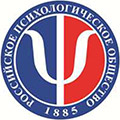Theoretical Foundations for the Use of The Lighthouse Strategy in the Rehabilitation of Patients with Neglect Syndrome
DOI:
https://doi.org/10.15826/Lurian.2024.5.3.1Keywords:
left-sided spatial neglect; visual neglect syndrome; neuropsychological rehabilitation; visual imagery technique The Lighthouse Strategy; P. Ya. Galperin’s theory; restorative learning; functional and holistic approaches to rehabilitationAbstract
The article discusses the main approaches to rehabilitation of patients with visual neglect syndrome, “bottom-up” and “top-down,” and the methods and techniques used in the main domestic and foreign rehabilitation programs. One of the most effective and easy to organize techniques is The Lighthouse Strategy, which involves the use of auxiliary mental and visual images for a more complete scanning of the space around. Training in the use of this technique takes place in an inpatient setting during the rehabilitation of patients, and subsequent learning and automation takes place in the home environment with the active involvement of their family. The effectiveness of this technique is defined differently within functional and holistic approaches in neuropsychological rehabilitation. In the article, the theoretical foundations for the use of The Lighthouse Strategy in domestic rehabilitation are considered in the framework of the P. Ya. Galperin’s theory and restorative learning of A. R. Luria and L. S. Tsvetkova.





